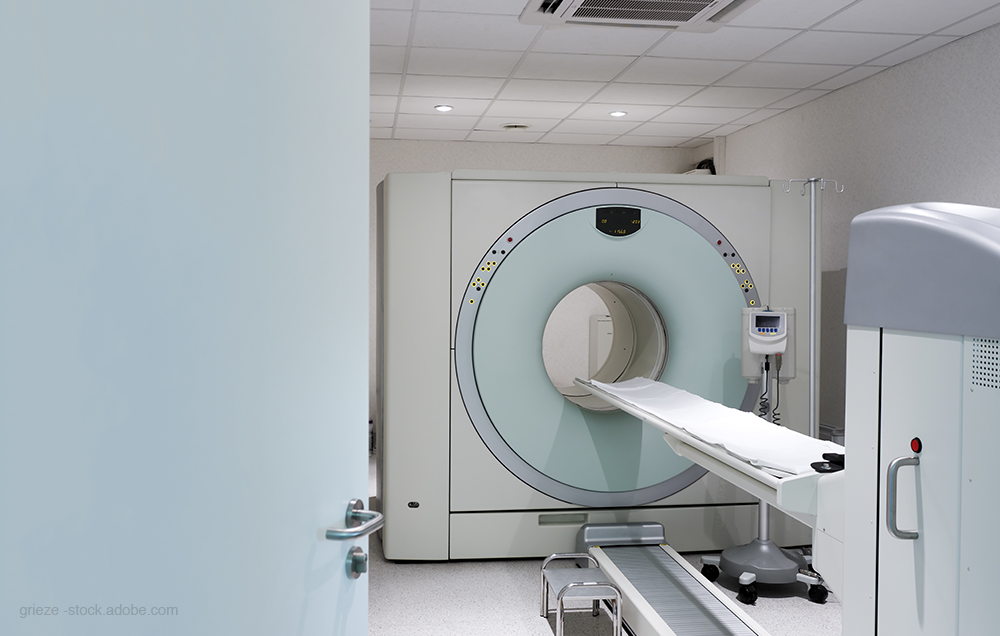PET/CT Could Help Predict Effectiveness of Cochlear Implant
Imaging of the brain stem can pinpoint assess brain stem function in patients with hearing loss.

PET/CT imaging could be used to predict how well a cochlear implant will improve hearing for people who have lost hearing in one or both ears.
In a small study from the University of Freiburg Medical Center in Germany, published in the March issue of the Journal of Nuclear Medicine, investigators, using 18F-FDG PET/CT imaging, determined that individuals with hearing loss in only one ear (asymmetric hearing loss) also have reduced glucose metabolism in parts of their brain stem and primary auditory cortex (PAC) – the area of the brain responsible for hearing tones and pitch. A healthy glucose metabolism in the brain ensures neurons are functioning properly.
It’s possible the PAC could be influenced by cortical reorganization – changing the cortical map due to outside stimuli. Understanding why and how this occurs could help providers determine how well a cochlear implant might work for individual patients, said lead study author Iva Speck, M.D., resident of otorhinolaryngology. And, fully digital clinical PET/CT systems provide the enhanced imaging and quantitative assessment of small brain stem nuclei necessary to answer these questions.
To determine the impact, researchers imaged 13 patients with asymmetric hearing loss, examining glucose metabolism in the inferior colliculus (IC) – the part of the brain that acts as the body’s main auditory pathway – and in the PAC. They performed an analysis to determine how the length of hearing impairment impacts glucose metabolism, and to compare glucose metabolism between the IC and PAC.
According to their results, patients had significantly reduced regional glucose metabolism of both the IC and PAC in the ears that had better hearing when compared to the impaired ears. Researchers discovered the longer a patient had hearing impairment, the higher their metabolism in the PAC on the unimpaired ear side. However, the duration of hearing impairment didn’t predict regional glucose metabolism for the impaired ear’s PAC or the IC with either ear.
“Previous studies suggest that the association between longer duration of hearing impairment and higher glucose metabolism indicates cortical reorganization. In bilateral deaf patients, this has been shown to lessen the benefits of cochlear implants,” Speck said.
Augmented imaging with a fully digital PET/CT could help predict successful cochlear implant outcomes, she said, because significant aspects of the auditory system, including small brain nuclei, such as the IC, can be evaluated for pre-operative patient characterization.
Alongside these results and potential applications with cochlear implants, she said, the findings could also be on interest to other neurological research fields, including neurodegenerative diseases, that affect the brain stem early in the course of the disease.
Study with CT Data Suggests Women with PE Have More Than Triple the One-Year Mortality Rate than Men
April 3rd 2025After a multivariable assessment including age and comorbidities, women with pulmonary embolism (PE) had a 48 percent higher risk of one-year mortality than men with PE, according to a new study involving over 33,000 patients.
The Reading Room: Racial and Ethnic Minorities, Cancer Screenings, and COVID-19
November 3rd 2020In this podcast episode, Dr. Shalom Kalnicki, from Montefiore and Albert Einstein College of Medicine, discusses the disparities minority patients face with cancer screenings and what can be done to increase access during the pandemic.
Predicting Diabetes on CT Scans: What New Research Reveals with Pancreatic Imaging Biomarkers
March 25th 2025Attenuation-based biomarkers on computed tomography (CT) scans demonstrated a 93 percent interclass correlation coefficient (ICC) agreement across three pancreatic segmentation algorithms for predicting diabetes, according to a study involving over 9,700 patients.
Can Photon-Counting CT be an Alternative to MRI for Assessing Liver Fat Fraction?
March 21st 2025Photon-counting CT fat fraction evaluation offered a maximum sensitivity of 81 percent for detecting steatosis and had a 91 percent ICC agreement with MRI proton density fat fraction assessment, according to new prospective research.